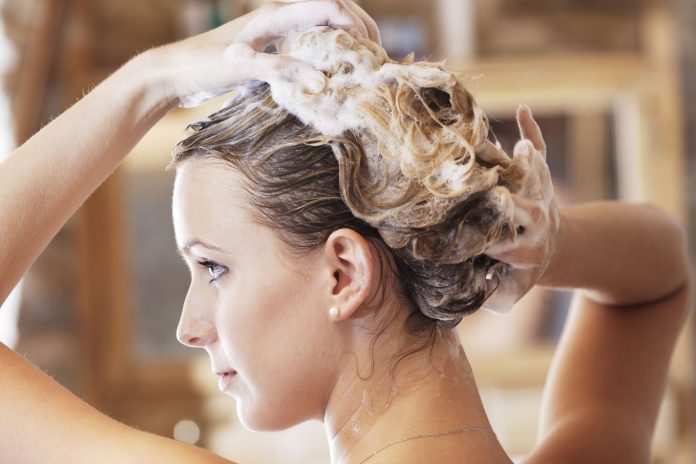Did you know that shampoos isn’t the only way to wash your hair?
Now the natural movement is on the rise, more and more women are looking for alternatives to clean their hair without using harsh chemicals every day.
The problem? Most of these alternatives DON’T work well. They’re either too gentle, require a transition period or leave build up on your hair.
Should you switch? It depends. Here are 7 ways to wash your hair so you can figure out which one is right for you:
A)Shampoo:
Shampoo is the most common way to wash hair. There’s a reason why we all do it. It works. Shampoo uses cleansing agents called surfactants to help water mix with oil, dandruff, buildup and dirt so they can rinsed away down the drain. The catch? If these surfactants are too strong, they’ll also remove the natural oils that moisturize your hair and protect it from damage. Cue dryness, brittleness and lack of shine. Instead of looking for a gentler shampoo, some people prefer to look for an alternative to shampoos altogether. If that’s you, keep reading.
B)Dry shampoo:
The BFF of every oily-haired girl out there, dry shampoos work without water. They use powders like cornstarch or talc to absorb excess sebum from hair. Here’s how it works: you spray the shampoo on your hair and then you brush it out. It’s not as effective as regular shampoos because it can’t clean hair completely. But it’ll make it look good enough you can skip washing for the day.
C)Conditioner:
Ever thought of using conditioner alone? Like shampoos, conditioners contain surfactants (the cleansing agents, remember?) but in much smaller amounts. In other words, they have some cleansing mojo but it’s very weak. Plus, conditioners coat hair to add moisture, which means they’ll leave a residue behind. Overtime, this can become a problem. If you want to give it a go anyway, here’s how you do it: you rub a small dollop thoroughly into the scalp, rinse after about 10 minutes and then apply another dose of conditioner to condition hair as normal. For best results, use a conditioners without silicones to avoid excessive buildup. FYI, your hair may look worse and greasy the first few times you wash it this way. You need to stick to it for a while to see results.
D)Body wash:
Did you know that shampoos and body washes have very similar formulas? They both use surfactants as cleaning agents with some conditioning ingredients thrown in the mix. The difference? Body washes use less harsh detergents–they’re designed to clean skin, which is more sensitive than hair. They work for hair, too, but they won’t provide the deep cleanse oily or heavy build-up hair needs.
E)Water only:
It works like this: using your fingernails, wash hair vigorously under water to remove dirt. Then, with a wash cloth or a boar bristle brush, brush your hair to evenly distribute oil from the scalp along the hair shaft and down the ends to moisturize it. This method has a transition period. It takes about six weeks for your hair to learn to produce less sebum . During that time, it’ll look super greasy. Wear a hat or a bandana.
F)No-Rinse shampoo:
These shampoos work without using water. You don’t need to wet your hair before application and you don’t need to rinse out. Because their formula is a lot more runnier than your normal shampoos, there is no need to use water to make it foam. All you have to do is apply the shampoo on your dry hair until it becomes wet. Massage the scalp to make it lather. Wipe out the foam with a towel. They are a great way to clean your hair on-the-go, but they don’t work as well as regular shampoos.
G)Homemade recipes:
There are lots of recipes to make your own shampoo. Here’s one:
Eggs and olive oil:
Mix a couple of eggs and a few tablespoons of standard olive oil lightly to make them combine correctly. Apply the mixture on your hair and wait about five minutes, then rinse off.





























